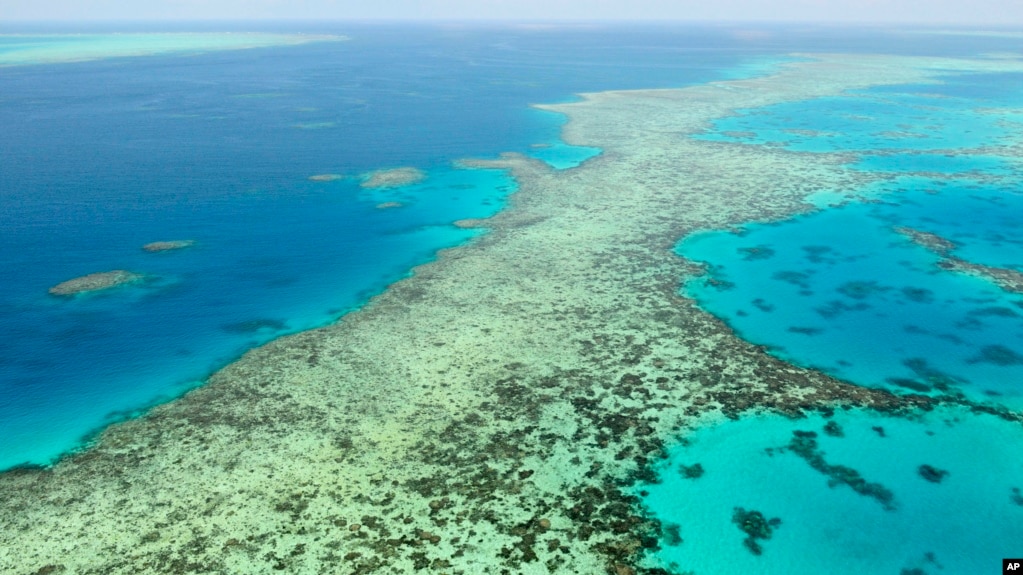
This aerial photos shows the Great Barrier Reef in Australia on Dec. 2, 2017. (Kyodo News via AP)
Australia has criticized a United Nations plan to declare the country’s Great Barrier Reef “in danger” from climate change.
The U.N.’s Educational, Scientific and Cultural Organization (UNESCO) proposed this week that the Great Barrier Reef be added to its List of World Heritage in Danger.
A UNESCO committee report said this week it had found that “there is no possible doubt” that the reef’s collection of colorful corals was “facing ascertained danger.”
The Great Barrier Reef covers about 344,000 square kilometers of area on Australia’s northeast coast. It contains about 3,000 reefs, natural structures made by very small animals called corals. The reef also includes more than 900 islands. The reef has been listed as a World Heritage site since 1981.
A report by the committee said it found the Great Barrier Reef had suffered major coral bleaching events in 2016, 2017 and 2020. It blamed the events on unusually warm ocean temperatures. UNESCO said the “in danger” listing was needed to make sure action is taken to protect the reef from the effects of climate change.
Such “corrective measures” would likely include stronger rules to reduce pollution linked to greenhouse gases. Adding the reef to UNESCO’s “in danger” list could also reduce the number of international visitors coming to the area to see the huge collection of colorful corals.
Australian officials said they were surprised and saddened at the proposal. “This decision was flawed. Clearly there were politics behind it,” Environment Minister Sussan Ley told reporters.
China chairs the UNESCO committee. But when asked about the issue in parliament, Ley would not say whether she thought China was to blame for the decision. Another Australian government official, however, told Reuters that China was responsible for the committee’s position. “We will appeal, but China is in control,” said the official, who did not want to be named.
In Beijing, a foreign ministry spokesman denied the Chinese government was behind the decision.
Ley said that she and Foreign Minister Marise Payne had called UNESCO Director-General Audrey Azoulay to officially protest the proposed listing.
Some environmental groups praised the U.N. proposal. Imogen Zethoven is an environmental advisor for the Australian Marine Conservation Society. She told The Associated Press she welcomed the committee’s recognition that “Australia hasn’t done enough on climate change to protect the future of the reef.”
The reef would become the first site to be added to the List of World Heritage in Danger because of climate change concerns, Zethoven added.
Richard Leck, a spokesman for the World Wide Fund for Nature in Australia, said the listing would come as “a real shock" to many Australians.
In 2014, Australia was warned that an “in danger” listing was being considered. The country had time to react by developing a long-term plan called the Reef 2050 Plan to improve the reef’s health.
But the committee said this week that that plan “requires stronger and clearer” steps toward fighting the effects of climate change.
Words in This Story
doubt – n. a feeling of not being sure about something
ascertain – v. to discover something
bleaching – n. a process, usually caused by warm ocean temperatures, in which corals lose algae and turn white
greenhouse gases – n. heat-trapping gases that warm the Earth’s atmosphere
flawed – adj. having a defect or imperfection
Comprehension Quiz
1. What is the story mainly about?
2. How much does the Great Barrier Reef cover?
3. How much reefs does it contain?
4. How many islands does the reef include?
5 In Paragraph 5, what did the UNESCO say?